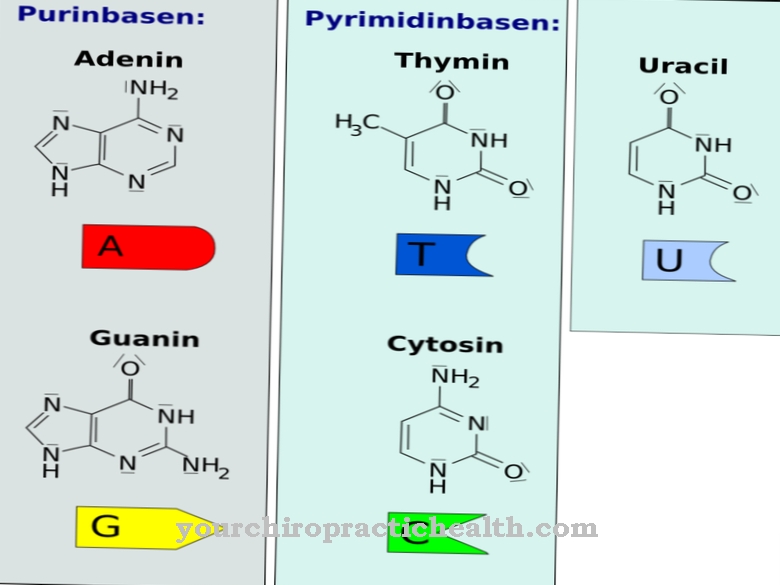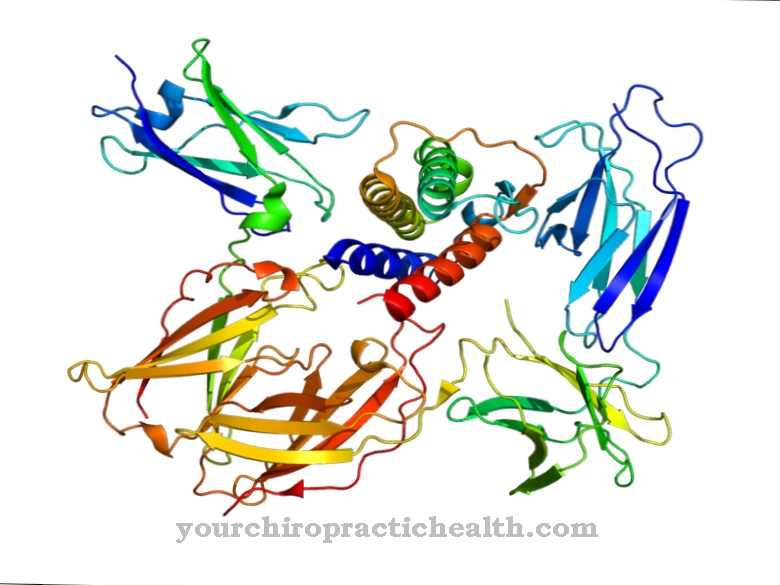When it comes to human sex hormones, estrogens, progestins and testosterone are usually mentioned first. However, in addition to these there is the group of Gonadotropins, Proteohormones, which have an equally crucial influence on ovaries, testes and endocrine functions. This hormone group includes e.g. FSH, LH, prolactin and hCG.
What are gonadotropins?
Gonadotropins are hormones with a protein structure that promote the development of the male and female gonads and influence the hormonal balance in the body. A distinction is made between pituitary gonadotropins, which are formed in the pituitary gland (pituitary gland), and extra-pituitary gonadotropins, which are formed in other glands.
Most of the hormones from the group of gonadotropins, however, are produced in the cells of the anterior pituitary gland and released into the bloodstream there. The follicle-stimulating hormone (FSH), for example, is a gonadotropin produced in the adenohypophysis that stimulates follicle maturation in women and sperm production in men. Another pituitary sex hormone is luteinizing hormone (LH), which is responsible for the maturation of sex cells in men and women.
Human chorionic gonadotropin (hCG) is also a gonadotropin. It ensures that the pregnancy is maintained. Prolactin from the pituitary gland is used for the growth of the female mammary gland during pregnancy and for milk secretion after the child is born.
Function, effect & tasks
LH stimulates the production and release of sex hormones in the gonads (gonads), i.e. Androgens or estrogens. In men, it promotes the synthesis and secretion of testosterone in the testes. In women, LH plays an important role in the menstrual cycle, especially in the second half of the month. Because in the middle of the cycle there is a steep rise in LH concentrations, which triggers ovulation.
In men, FSH stimulates the Sertoli cells in the testes, in or between which sperm formation takes place. In a woman early in her cycle, the main action of FSH is to ripen the follicles from the primordial follicle to the volatile tertiary follicle. During pregnancy, the hCG receives the corpus luteum, which in turn produces the hormone progesterone, which is important for maintaining pregnancy. Furthermore, hCG promotes the synthesis of steroid hormones.
In women, prolactin promotes milk production in the mammary gland, especially during pregnancy. The hormone, on the other hand, has an inhibiting effect on follicle maturation, since no further fertile follicles should mature during pregnancy. Prolactin is also thought to play a role in post-orgasm fatigue.
Education, occurrence, properties & optimal values
Both prolactin and LH and FSH are produced in the pituitary gland. Their release is stimulated by another hormone, the so-called gonadotropin-releasing hormone (GnRH) from the hypothalamus. Both hormones in turn inhibit the secretion of GnRH to prevent their own overproduction. LH and FSH as well as hCG have identical alpha subunits, which means that the specific biological function of the hormones is based on the different structures of their beta subunits.
The normal values for both LH and FSH in women before menopause are 2-8 U / l, depending on the cycle, and after menopause they are over 20 U / l (FSH) or 30 U / l (LH). Unlike FSH, LH and prolactin, hCG is synthesized outside of the pituitary gland. Under the influence of the chorion, the female placenta produces hCG during pregnancy, with the highest level of hormones being reached in the second to third months. On the other hand, prolactin is formed in the anterior pituitary gland from the eighth week of pregnancy. The regulation of the release takes place mainly via an inhibition by dopamine from the hypothalamus.
A synthesis-increasing effect is ascribed to estrogen. The normal value for the prolactin concentration in the blood for women is around 2–25 μg / l. Values above 25 to 200 μg / l are to be classified as increased, all higher concentrations indicate a pathological change. During pregnancy, more prolactin is formed and released by the child when it is sucked. In men, the prolactin concentration is usually between 3.0-14.7 μg / l.
Diseases & Disorders
Decreased LH concentrations in women can includeas a result of secondary ovarian underactive, which is due to a disorder in the hypothalamus or pituitary gland. This is e.g. the case with anorexia.
In men, they can be the result of secondary testicular hypofunction or testosterone intake. Elevated LH levels are found in women with primary ovarian insufficiency, premature menopause or with polycystic ovaries, as well as in men with primary testicular hypofunction or androgen resistance due to defective androgen receptors. hCG is best known for its function as evidence of pregnancy. Because an increased hCG level in the urine, as measured with the usual pregnancy tests, is a relatively sure sign of pregnancy.
In the initial phase, the hCG values are also used to monitor the course of a pregnancy. If significantly increased concentrations are found, these are indicators of a multiple pregnancy or a chromosomal abnormality, such as Down's syndrome, in the embryo. Too low or falling hCG values can be caused, for example, by an ectopic pregnancy, threatened premature birth or miscarriage.
Outside of pregnancy, increased hCG levels can be an indication of ovarian carcinoma, testicular, renal cell and bronchial carcinoma as well as hepatocellular carcinoma. Certain drugs, such as the neuropletic amisulpride, can trigger excessive prolactin concentrations in the blood, which are known as hyperprolactinemia. These can lead to a lack of menstrual bleeding, spontaneous leakage of breast milk and infertility. In men, abnormal growth of the mammary glands can occur as a result.




.jpg)







.jpg)



.jpg)










.jpg)
